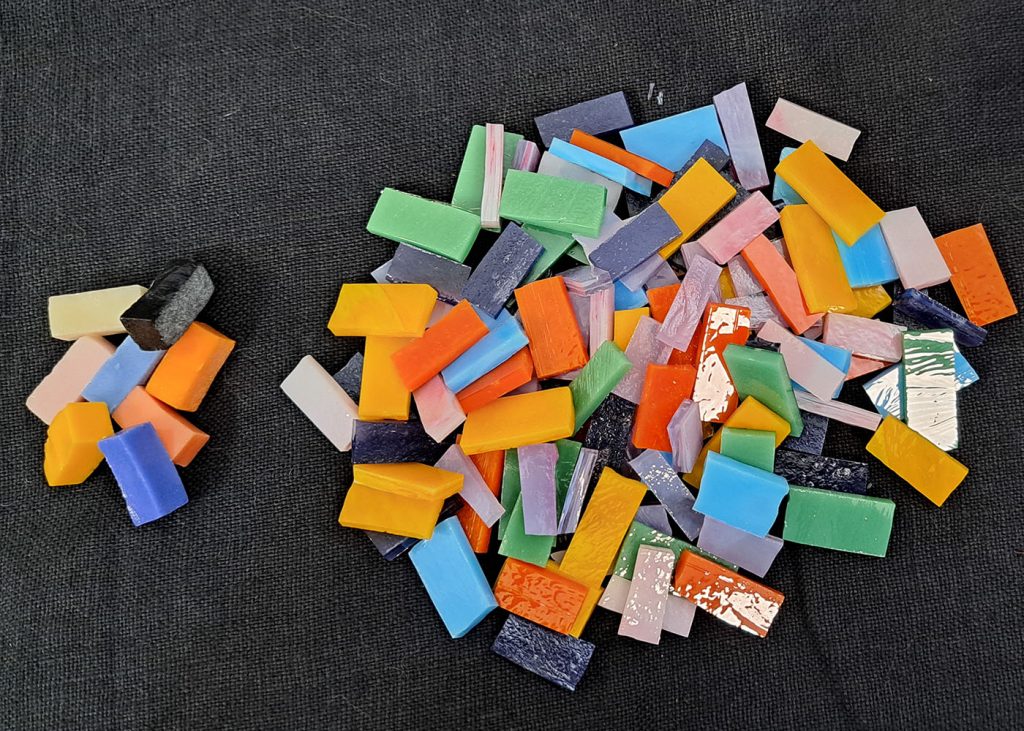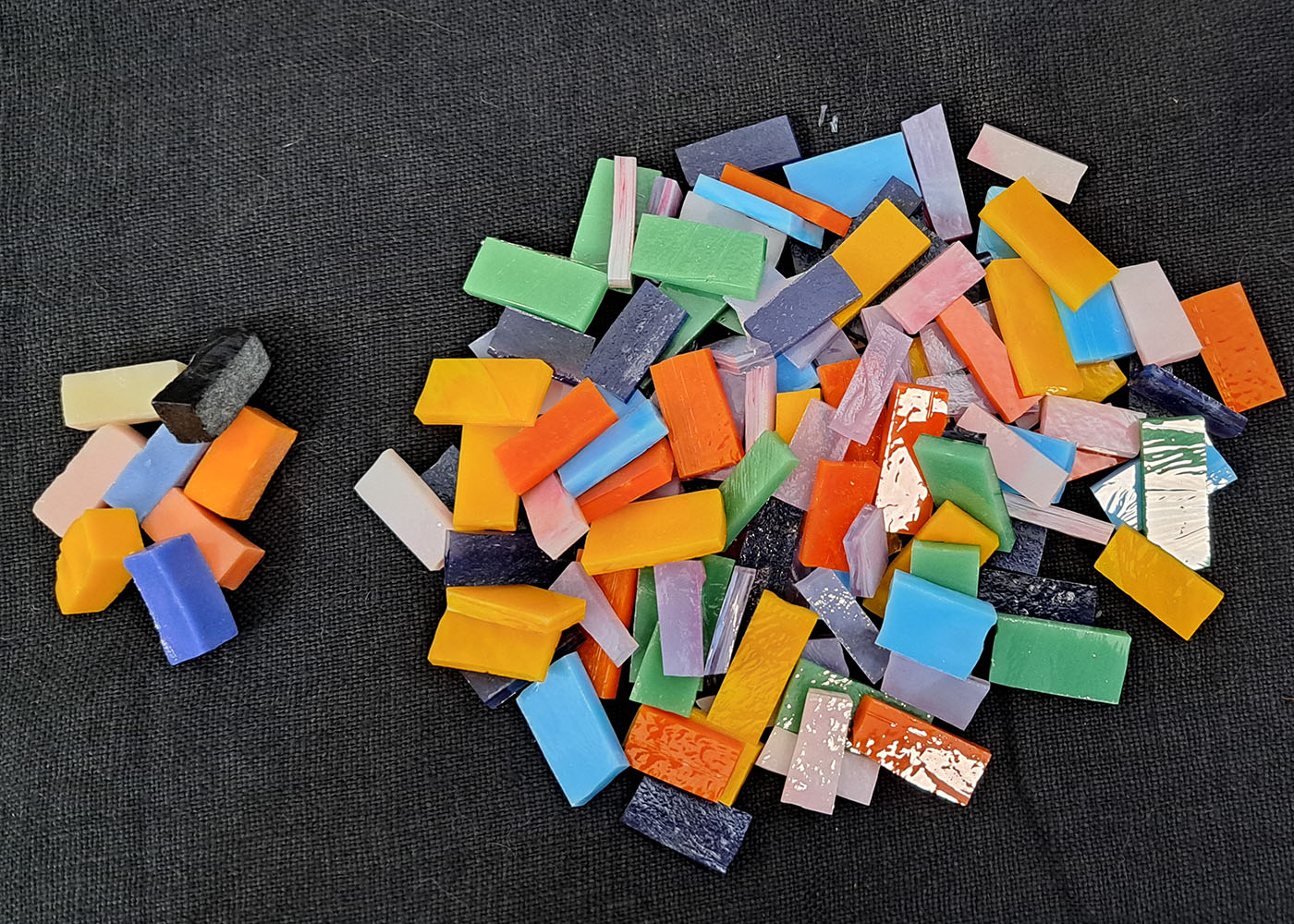We haven’t been able to keep our Smalti stocked very well over the past year because it has quadrupled in cost after the tariffs and freight gouging and the large factory price increase.
I have been fretting about that a lot recently, and so Natalija reminded my how much cheaper and easier it is to use American-made Stained Glass instead of smalti.
Natalija’s video below shows how quickly you can “strip & clip” a small sheet of stained glass into mosaic tiles.
Stripping Stained Glass
The “stripping” is done using the Economy Pistol-Grip Cutter. Note that a straight-edge ruler could have been used with the cutter to product strips of equal width.
Clipping Tiles
The “clipping” is done with a Mosaic Glass Cutter. The version Natalija uses in the video is a ProControl Mosaic Glass Cutter.
The other tool you see in the video is a pair of Running Pliers, which is used to snap strips apart once the glass has been scored.
How Make Mosaic Tile Video
A Caveat
The Pistol-Grip Cutter might produce results you find too uniform, which is why I don’t use that tool to make tile. I like the look and feel of imperfect cuts.
If you want all your pieces to have a hand-cut look (recommended), then avoid the stripping with a Pistol-Grip Cutter and cut up the sheet using only the Mosaic Glass Cutter.
Cost Comparison
Smalti is expensive, running roughly $50 to $60 per square foot as of October 2022, and it isn’t American made.
Our Stained Glass is American made, and it runs roughly $20 to $30 per square foot, which is less than half the price of smalti.

In addition to price, there are other reasons why American-made stained glass is more cost effective than smalti:
Stained Glass has a much lower scrap rate when cut with a scoring tool such as Pistol-Grip Cutter.
Stained glass is swirled and mottled so that one small sheet can provide many tints of the same hue or a variable mix of two different hues.
To get the equivalent color selection in smalti, imagine how many bags you would need to buy!
Thickness Concern
Smalti is roughly the same thickness (10mm – 3/8 inch) as large flooring tiles made from porcelain or marble.
Stained-Glass is roughly the same thickness as most glass mosaic tile.
The implication is that smalti is better for mosaic inserts made to go in between large floor tiles, but stained glass is much easier to use in most mosaics, especially mixed-media mosaics made from glass tile of different types.


Leave a Reply